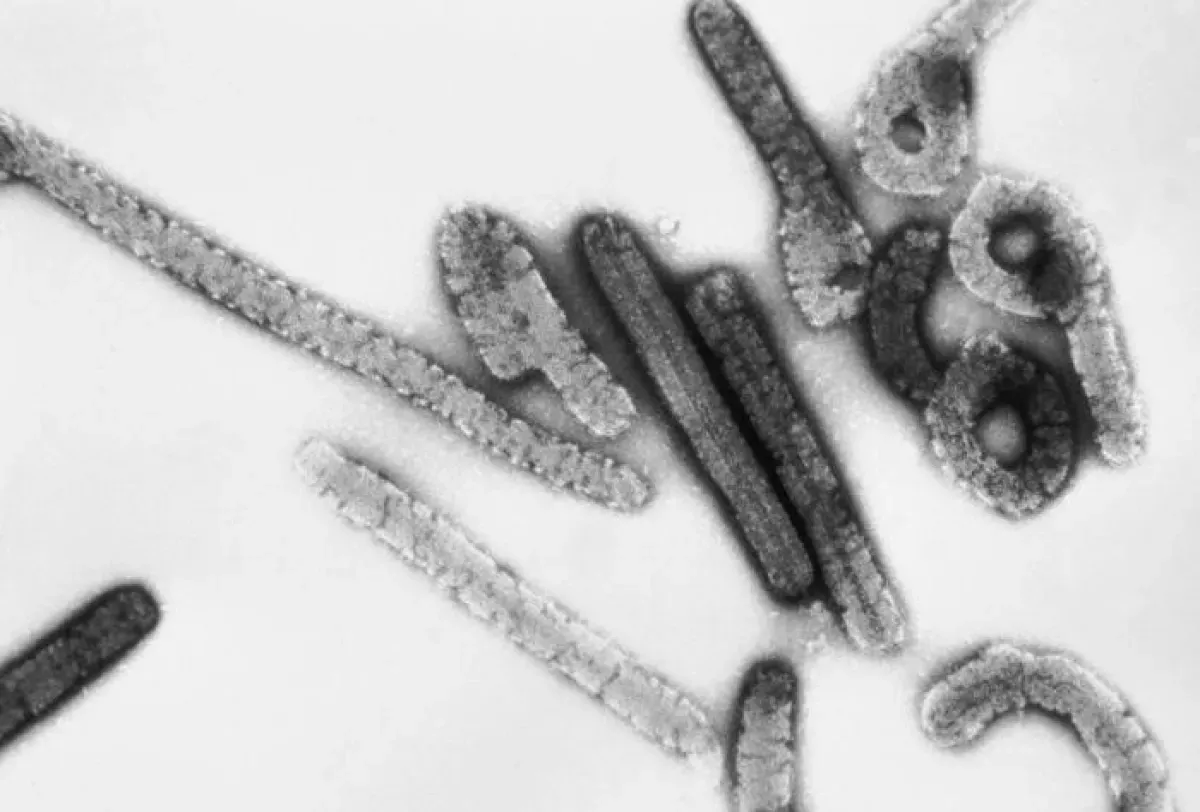Marburg virus (MARV) is a severe hemorrhagic fever virus that affects primates. Classified as a high-risk pathogen by organizations like the WHO, NIAID, and CDC, it is considered a significant threat to public health and biosecurity. Its classification as a Category A bioterrorism agent highlights its potential for misuse and the importance of strict control measures.
1967: Marburg Virus Strains Isolated in Uganda
In 1967, Marburg virus strains were isolated in Uganda.
1967: Marburg Virus First Described
The Marburg virus was first described in 1967 following outbreaks of Marburg virus disease in Marburg and Frankfurt, Germany, and Belgrade, Yugoslavia. The outbreaks were linked to laboratory workers exposed to infected tissues from grivet monkeys at the Behringwerke facility in Marburg.
1967: Marburg Virus Named
The term "Marburg virus" was first introduced in 1967.
1999: Marburg Virus Strains Isolated in the Democratic Republic of the Congo
Marburg virus strains were isolated in the Democratic Republic of the Congo in 1999.
2000: Marburg Virus Strains Isolated in the Democratic Republic of the Congo
Marburg virus strains were isolated in the Democratic Republic of the Congo in 2000.
2004: Marburg Virus Strains Isolated in Angola
Marburg virus strains were isolated in Angola in 2004.
2005: Virus Name Changed to Lake Victoria marburgvirus
In 2005, the name of the virus was changed to Lake Victoria marburgvirus, differentiating the virus from its species only by italicization.
2005: Marburg Virus Strains Isolated in Angola
Marburg virus strains were isolated in Angola in 2005.
2007: Marburg Virus Strains Isolated in Uganda
Marburg virus strains were isolated in Uganda in 2007.
2009: Expanded Clinical Trials for Ebola and Marburg Vaccine Begin
In 2009, expanded clinical trials for a vaccine targeting both Ebola and Marburg viruses were initiated in Kampala, Uganda.
2009: Marburg Virus Strains Isolated in Uganda
Marburg virus strains were isolated in Uganda in 2009.
2009: Infectious MARV Isolated from Egyptian Fruit Bats
The successful isolation of infectious MARV from healthy Egyptian fruit bats in 2009 suggested a potential role for Old World fruit bats in the natural transmission cycle of marburgviruses. This finding, alongside the isolation of infectious RAVV, further supported this hypothesis.
2010: Marburg Virus Name Reinstated
The name "Marburg virus" was reinstated in 2010 due to the confusion caused by the 2005 name change. The species name was subsequently revised.
2012: Experimental Infection Study on Rousettus aegyptiacus
In 2012, an experimental infection study involving Rousettus aegyptiacus provided more evidence for the potential role of these bats in the ecology of MARV.
2014: Merck Acquires Rights to Candidate Vaccines
Merck acquired the rights to all of the related candidate vaccines in 2014, but they chose not to develop most of them, including the Marburg vaccine, due to financial considerations.
2014: First Clinical Trial for Marburg Virus Vaccine
The first clinical trial to assess the effectiveness of a Marburg virus vaccine took place in 2014. The trial focused on a DNA vaccine and found that vaccinated individuals developed some antibodies, although complete immunity was not anticipated.
2019: Merck Brings rVSV-ZEBOV Vaccine to Market
In 2019, Merck brought the rVSV-ZEBOV vaccine, which is closely related, into commercial use with funding from GAVI.
June 23, 2022: Study Shows Promising Results of rVSV Vaccine in Guinea Pigs
On June 23, 2022, researchers affiliated with the Public Health Agency of Canada released a study titled PHV01. The study showed promising results for a recombinant vesicular stomatitis virus (rVSV) vaccine tested on guinea pigs. It found that vaccinating guinea pigs approximately one month before infection provided a high level of protection.
Mentioned in this timeline
Germany officially the Federal Republic of Germany is a Western...
Kenya officially the Republic of Kenya is an East African...
Canada is a North American country the second largest in...
Ghana officially the Republic of Ghana is a West African...
Uganda officially the Republic of Uganda is a landlocked East...
Guinea officially known as the Republic of Guinea is a...
Trending
3 months ago Heavy Downpours and Strong Winds Expected to Impact Boston Commute on Monday
6 months ago Herbert's Instincts Clinch Rally vs Stricker; Ruud and Stricker face off at Gstaad.
2 months ago Devastating Floods Hit Vietnam: Eight Dead, Coffee Harvest Hindered, Cities Submerged.

1 month ago Vanessa Hudgens and Cole Tucker Welcome Second Child Into Their Family

2 months ago Mia Goth stars in Guillermo del Toro's Frankenstein, a Netflix adaptation receiving mixed reviews.

2 months ago Anisimova at WTA Finals: Semifinal showdown against Sabalenka, Rybakina advances to the final.
Popular

Stranger Things created by the Duffer Brothers is a popular...

XXXTentacion born Jahseh Dwayne Ricardo Onfroy was a controversial yet...

Kelsey Grammer is an accomplished American actor producer and singer...

Candace Owens is an American conservative political commentator and author...

Bernie Sanders is a prominent American politician currently serving as...

Melania Trump a Slovenian-American former model has served as First...
